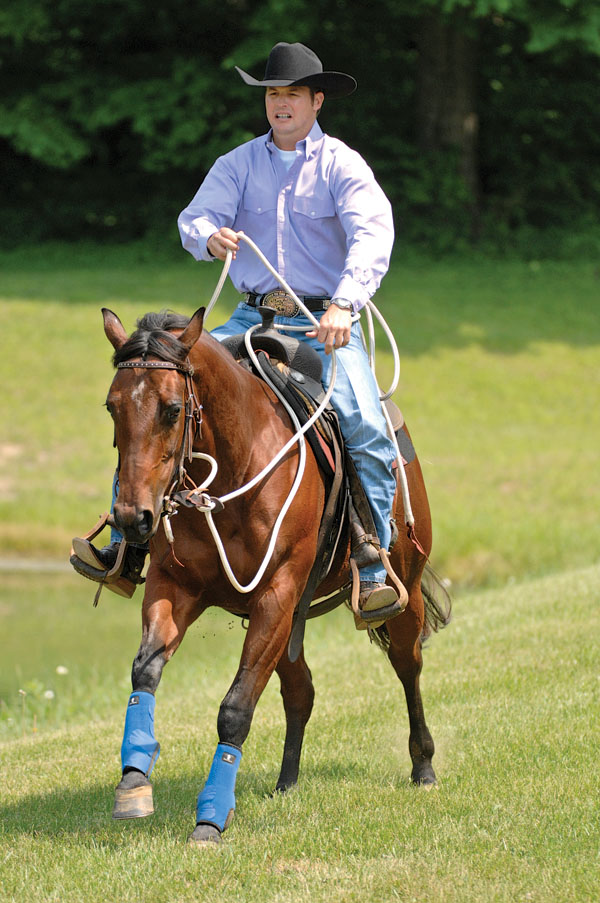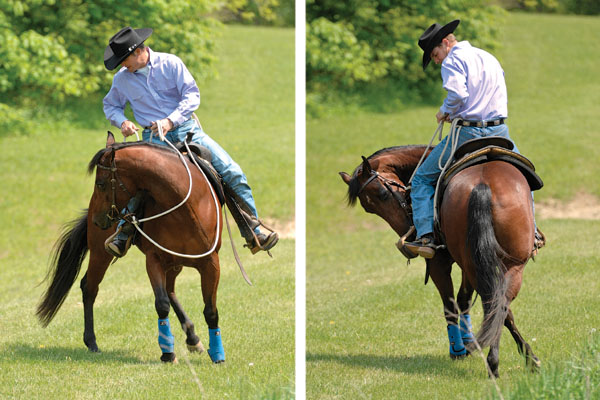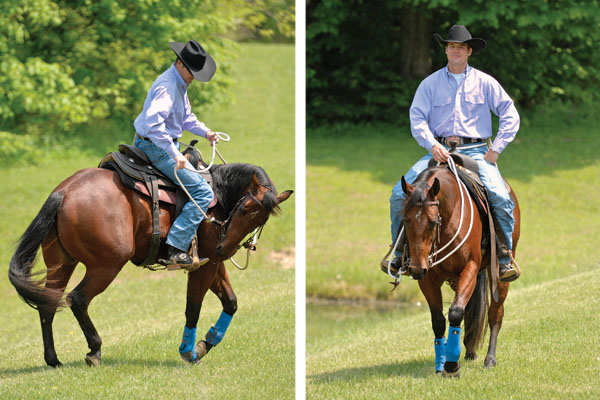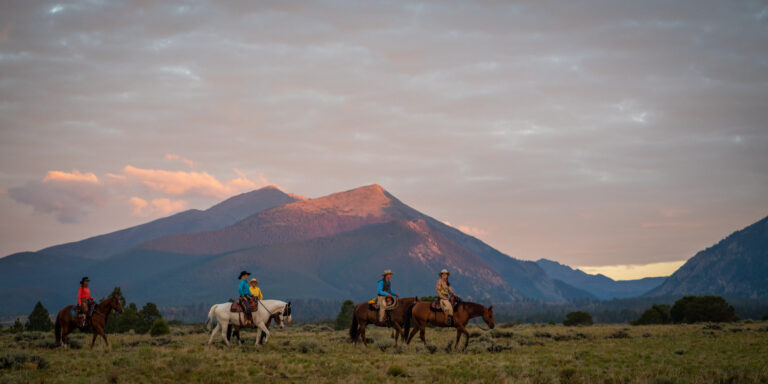Q I enjoy trail riding, but my Appaloosa mare sometimes acts up for no apparent reason. She’s 11 years old and quiet in an arena, but often when we’re out on the trail, alone or with others, she gets excited. Sometimes it feels as if she’s going to take off with me, or she’ll tense up as if she wants to buck. Other times, she’ll stop and refuse to go forward; when I insist, she’ll start backing up.
[MORE WITH CLINTON ANDERSON: Master Obstacles]

What can I do to feel safer and in better control?
Midge Richardson, Indiana
A Midge, it’s understandable that you’re fearful when you lose control of your horse, especially if you’re on the trail. Horses are often more excitable out in the open. Your mare may be feeling fresh, which likely means you didn’t work her on the ground long enough before mounting up (more on that when we discuss ground work, in a moment).
Or she may just be feeling disrespectful, or excited in a new environment. Whatever the cause, you need to redirect her energy and remind her you are in control of her movement.
I’m going to give you an action plan to employ when your mare becomes hard to handle in the open or on the trail; then, I’m going to provide you with some suggestions for reconditioning her at home to be quiet and respectful any time you ride.
[MORE WITH CLINTON: 3 Ways to De-Spook Your Horse]
When Trail Troubles Occur
When things go wrong on the trail or anywhere, stay as calm as you can to avoid rattling your mare further. Then, do not attempt to contain her excitement by pulling back on both reins. This only sets you up for failure (because she’ll always be able to out-muscle you) and makes her feel claustrophobic, which in turn enhances her fear or agitation.

Instead, use a one-rein stop. This “emergency brake” works because it brings her front end around while disengaging her hindquarters, as one hind leg crosses over the other. This prevents forward motion and unbalances her slightly, making it difficult for her to bolt, buck, spook, or shy.
To do a one-rein stop, sit deeply in the saddle, using your thighs to hold yourself steady (especially if your horse is dragging you forward) but avoiding gripping with your lower leg (which can make you seem like a predator). Slide one hand 10 to 12 inches down the rein, then use this leverage to gently pull your horse’s head around to the side, back toward your toe. (Don’t jerk your mare’s head to the side or you could throw her off balance, risking a fall.)
This will bring her around in a small circle and back under your control. At this point, you can bring her all the way to a stop; to do so, use the leg on the same side as the pulling rein to push her hindquarters to the side, “disengaging” them. Or you can simply continue riding in small circles, changing reins frequently to reverse direction, until she softens in your hand and becomes more responsive.


Then, keep her attention by giving her additional specific things to do. Keep her feet moving with energy on turns, serpentines, figure 8s—anything to keep her focused on maneuvering her feet (which in turn, like ground work, activates the “thinking side” of her brain). Keep on like this until she settles into her work, then resume your ride.
If her problem is balking and backing, don’t wear yourself out trying to drive her forward with your legs. Again, you can’t win any contest of strength with your horse. Instead, use the leverage of one rein to draw her around to the side and move her in a small circle, to get her legs “unstuck.”
If at any point you feel unsafe and unable despite these measures, dismount and put her to work from the ground. (Here’s where having a mecate can be useful, or else carry a long lead rope or a longe line with you when you go out on the trail.) Don’t let her stand and rest; that just rewards her for her uncooperative behavior. Instead, keep her moving around you in a circle, frequently changing directions, while being careful to position yourself out of kicking range.
Continue like this until you see signs of relaxation when she stops—she lowers her head, licks her lips, takes a big breath, blinks her eyes, and/or cocks a hind leg. Then, remount and continue your ride.
If you follow this sequence every time your mare acts up, she’ll begin to think just going along nicely is a good alternative to the work she winds up having to do when she’s naughty.
[MORE WITH CLINTON: Cure A Stumbler]
Prepare at Home
To lessen the odds your mare will feel fresh or disrespectful out on the trail, increase the amount of ground work and under-saddle schooling you do at home. Ground work is the foundation for developing trust, respect, and responsiveness. For a horse like your mare, that needs to learn to be calmer and more focused and willing out on the trail, this type of foundation work becomes even more important.
In addition to activating the “thinking side” of your mare’s brain, ground work helps to establish you as her “leader.” This is because you’re directing the movement of her feet, just as the boss mare directs the movement of other horses in the herd with a flick of her ears or the raising of a hind leg. Ground work also builds trust and enhances the communication between the two of you, plus helps to work off any excess energy. All of this means the time you spend on ground work invariably translates into a calmer, more focused, and more willing mount under saddle.
There are a lot of ground work exercises to try; I find my “longeing for respect” especially useful for developing willingness and respectfulness in a horse.
An excellent exercise you can do on the ground and in the saddle is flexing your mare’s neck to each side alternately; this improves her willingness to bend and sets her up to be even more responsive to the one-rein stop, should you need it again out on the trail. (For details on teaching flexing from the ground and from the saddle, see the note at the end of this article.)
In a perfect world, you’d ride and/or do ground work with your mare six days a week. If, like many people, you have just three or four days per week to work your horse, arrange your schedule if possible so those days fall in a row, rather than spread out through the week. That way, your mare’s learning can accumulate on consecutive days, rather than being constantly interrupted by time off.
Then, be consistent with your routine.
If you are, and if you take action immediately as I’ve described whenever she acts up on the trail, you’ll be able to overcome her naughty antics—and have more fun riding out in the open, or anywhere.
If, however, you consistently work on the above techniques and still feel overwhelmed by your mare’s behavior, you’re outmatched and should seek professional help.
Clinton Anderson, Stephenville, Texas, is a clinician, horse trainer and competitor. He’s dedicated his life to helping others realize their horsemanship dreams and keeping them inspired to achieve their goals. Learn more at downunderhorsemanship.com.







